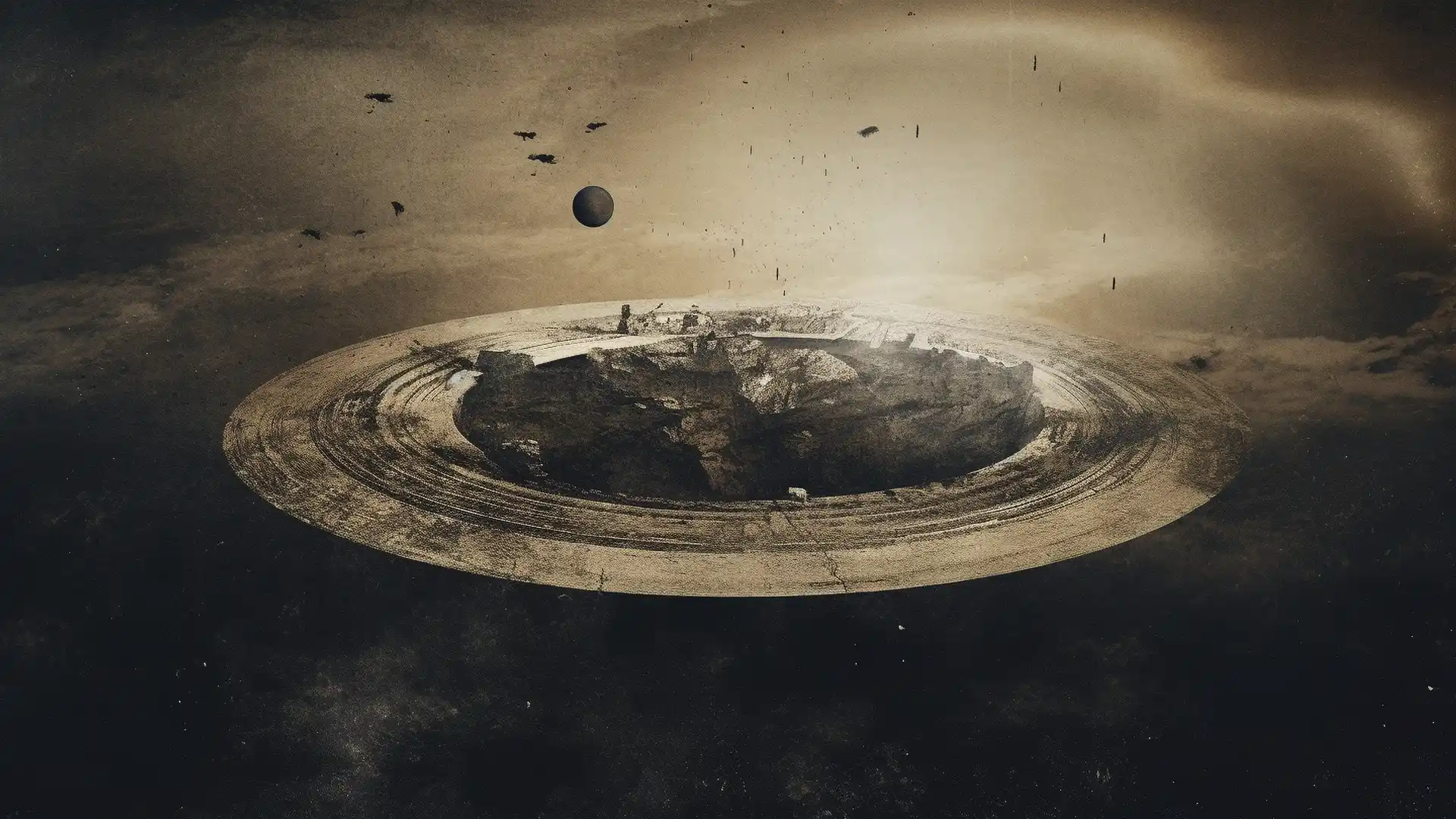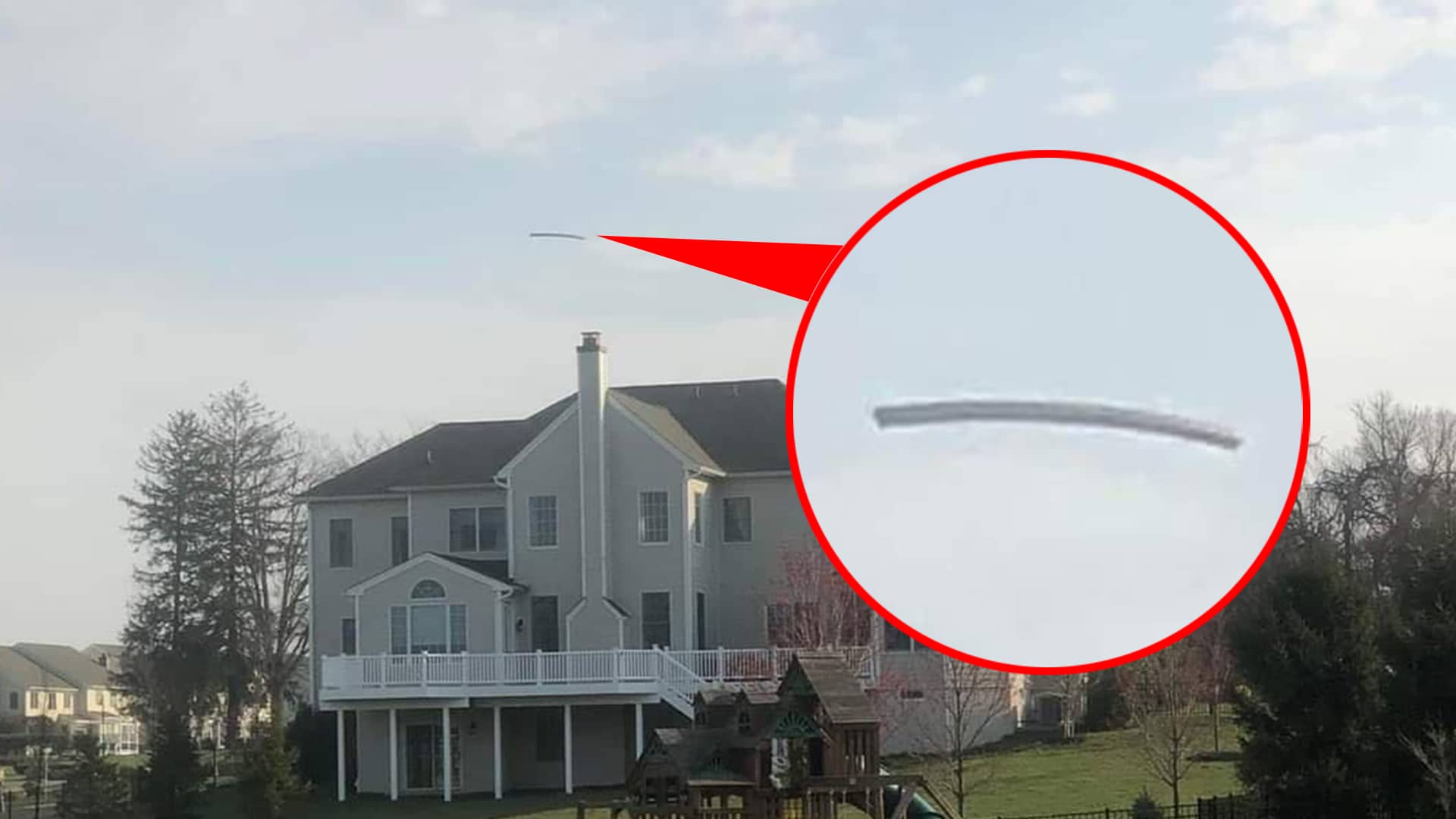Conspiracy Chronicles
Is the Earth flat? Exploring the Flat Earth theory

As we embark on a journey to explore the fascinating world of flat Earth beliefs. In an era of advanced scientific knowledge, it may come as a surprise to discover that there is a growing number of individuals who question the roundness of our planet. Have you ever wondered if the Earth is flat? It's a question that has sparked curiosity and debate for centuries.
No, the Earth is not flat. The overwhelming evidence from historical records, scientific research, and observations from space all confirm that the Earth is a spherical planet.
While it may be tempting to dismiss these beliefs as fringe or laughable, it is crucial to approach them with factual information and engage in constructive dialogue. In this article, we will delve into the rise of flat Earth beliefs and unravel the importance of addressing them with evidence-based reasoning. So, let's challenge our own assumptions and explore the intriguing world of flat Earth myths together.
I. Historical Understanding of Earth's Shape:
Throughout history, various civilizations and thinkers have contributed to our understanding of the Earth's shape. Ancient Greek philosophers, such as Aristotle, gathered empirical evidence by observing new constellations during their travels. The calculations of Eratosthenes, a Greek mathematician in the third century BC, were groundbreaking in determining the Earth's circumference. Islamic scholars further advanced measurements from the 9th century AD onwards. Additionally, European navigators embarked on epic journeys, circumnavigating the Earth and providing practical evidence of its roundness.
II. The Scientific Evidence for a Spherical Earth:

A. Visual Proof:
When we gaze out at the horizon, we witness a compelling demonstration of the Earth's curvature. As we observe distant objects, they appear to sink below the horizon, revealing the curved nature of our planet. Furthermore, photographs of Earth taken from space, like the iconic “Blue Marble” image, provide undeniable visual confirmation of its spherical shape. It is important to address misconceptions related to distant skylines, as they can be explained by atmospheric refraction and the bending of light.
B. Physical Laws and Phenomena:
The Coriolis force is a fundamental concept supporting the round Earth model. This force, a result of the Earth's rotation, causes the deflection of moving objects, such as wind patterns and ocean currents. The Coriolis effect explains the clockwise rotation of low-pressure weather systems in the northern hemisphere and counterclockwise rotation in the southern hemisphere.
Foucault's pendulum, named after the French physicist Léon Foucault, provides another striking piece of evidence. This freely swinging pendulum gradually changes direction during the course of a day due to the Earth's rotation, offering a direct demonstration of its spherical shape. Additional physical laws and phenomena, like gravity and the behavior of celestial objects, further support the understanding of Earth as a spherical entity.
By examining these historical milestones and the scientific evidence, we can confidently conclude that the Earth is indeed a sphere. But let us now address the claims and misconceptions put forth by flat Earth proponents, diving deeper into their arguments to shed light on the truth.
III. Debunking Flat Earth Claims:
A. Addressing Misconceptions:
Flat Earth proponents often present various arguments to support their beliefs. Let's examine some of the common claims and provide clear explanations backed by evidence to debunk them.
One argument is the perception of a flat horizon. However, this perception is a result of the Earth's large size compared to our limited field of view, and the curvature becomes evident when observing over long distances or from higher vantage points.
Another claim revolves around the belief that all photographs of Earth from space are manipulated or fake. However, numerous photographs, videos, and live streams from space agencies and independent sources offer compelling visual evidence of our spherical planet.
B. Inconsistencies in Flat Earth Theories:
One striking aspect of flat Earth theories is the lack of a consistent model among proponents. Different flat Earth models propose contradictory explanations for various phenomena, such as the behavior of celestial objects, the rotation of the night sky, and the seasons. These inconsistencies raise doubts about the validity of their claims.
Moreover, constructing a comprehensive conspiracy narrative to support the flat Earth idea poses significant challenges. The alleged involvement of countless scientists, space agencies, and governments worldwide, working together to maintain a conspiracy, seems implausible given the scale and complexity such a conspiracy would entail.
By critically examining the arguments put forth by flat Earth proponents, it becomes clear that their claims lack substantial evidence and fail to provide a coherent and consistent alternative to the well-established understanding of our spherical Earth.
Now that we have addressed these misconceptions and inconsistencies, it is important to consider how we can foster trust in scientific institutions and engage in meaningful conversations to counter the spread of flat Earth beliefs.
IV. Why Do People Think the Earth is Flat?
Have you ever wondered why some people believe the Earth is flat? It's a fascinating question that has puzzled many of us. As I dig deeper into this topic, I've discovered a few reasons behind this intriguing belief.
Firstly, there's a significant influence of what I like to call the “conspiracy mentality.” Some individuals tend to distrust authorities and institutions, including scientists and scientific bodies like NASA. They believe that there is a massive conspiracy to hide the truth about a flat Earth. This mistrust leads them to seek alternative explanations that challenge the widely accepted scientific consensus.
Additionally, the power of social influence should not be underestimated. When like-minded individuals gather in online communities or attend flat Earth conferences, their beliefs can be reinforced and strengthened. This sense of belonging to a community that questions the established norms can be appealing and reinforce their conviction in a flat Earth.
According to Live Science, Flat-Earth adherents tend to have similar beliefs as those who believe in other conspiracy theories.
It's essential to recognize that these beliefs are not solely rooted in a lack of education or scientific knowledge. Instead, they reflect a complex interplay of cognitive biases, distrust in authority, and a desire to challenge the status quo.
V. How Many People Believe the Earth is Flat?
Have you ever wondered how many people actually believe in a flat Earth? It's a question that piqued my curiosity, and the statistics and data I came across were quite eye-opening. Here are the facts:
- According to a study conducted in Brazil, around 7% of the population, roughly 11 million people, believed in a flat Earth.
- Polls by YouGov America in 2018 and FDU in 2022 found that as many as 11% of Americans believe the Earth might be flat.
- The Flat Earth Society claims more than 500 members on its roster.
While it's challenging to obtain precise numbers, various studies and surveys have shed some light on the prevalence of flat Earth beliefs. Surprisingly, there is a notable following worldwide. In fact, recent surveys suggest that a significant percentage of the population still entertains the idea of a flat Earth.
For example, one study conducted in Brazil found that around 7% of the population, roughly 11 million people, believed in a flat Earth. Similarly, there are indications that this belief has gained traction in other parts of the world, including the United States and certain Islamic countries.
The impact of this phenomenon extends beyond mere curiosity. It can have significant consequences for science education and public understanding of basic scientific principles. When a substantial number of people hold such beliefs, it becomes crucial to address misconceptions and promote critical thinking.
As we delve deeper into the topic, we'll explore the global impact of flat Earth beliefs and the challenges they present to scientific literacy and understanding. So, let's continue our journey and gain a better understanding of this intriguing phenomenon.
VI. What Would Happen if the Earth Was Flat?

Imagine for a moment that the Earth was actually flat. It's a peculiar thought that leads us to ponder the consequences and implications of such a world. Let's dive into this intriguing scenario and explore the scientific, societal, and practical challenges that would arise.
From a scientific standpoint, a flat Earth would defy our understanding of gravity, celestial mechanics, and the laws of physics. It would require a complete reimagining of our understanding of the universe. The natural phenomena we observe, such as the rotation of the Earth, the curvature of the horizon, and the behavior of weather patterns, would need new explanations that align with the flat Earth model.
On a societal level, navigating the practicalities of a flat Earth would pose significant challenges. Air travel, for instance, would need to be reconfigured entirely, as flight paths and travel times would drastically change. The establishment of time zones would also be different, raising complications for global coordination and communication.
Let's really imagine for a moment that the Earth was flat. Well, a lot of things would be quite different! One major change would be with plate tectonics. You see, the movement of Earth's crust, the shifting of continents, and the creation of mountains are all driven by the dynamics of a spherical Earth. On a flat Earth, these processes wouldn't work as we know them.
But that's not all. Satellites play a crucial role in our modern world, from communication to weather forecasting. On a flat Earth, there would be no gravity to hold satellites in their orbits. They would simply drift away, unable to stay in place.
Here's another interesting point. If the Earth were flat, its mass would still exist, but in a flat shape. Over time, the gravity of the Sun would break up this flat object into fragments, which would eventually come together again and form a spherical shape. Gravity has a way of pulling things into spheres, so a flat Earth would have a hard time maintaining its shape in the presence of gravity.
So, if the Earth were flat, the laws of physics and the force of gravity would create quite a different reality. It's fascinating to think about, but thankfully, we live on a beautifully round planet that provides us with amazing wonders and discoveries.
As we ponder these hypothetical scenarios, it becomes clear that the idea of a flat Earth presents numerous scientific, societal, and practical obstacles. It serves as a reminder of the importance of scientific knowledge and critical thinking in shaping our understanding of the world we live in.
VII. Building Trust in Science:
In order to address flat Earth beliefs and promote a better understanding of scientific principles, it is crucial to focus on building trust and engaging in meaningful interactions. Here are some key strategies to foster trust in science:
- Emphasize the Importance of Trust and Engagement:
Recognize that trust is the foundation upon which scientific knowledge is built. It is vital to convey that scientists are driven by evidence, rigorous methodologies, and a commitment to uncovering the truth. By highlighting the importance of trust, we can bridge the gap between scientific institutions and those who hold alternative beliefs. - Face-to-Face Interactions:
Engaging in face-to-face interactions can be a powerful tool to address flat Earth beliefs respectfully. It provides an opportunity to listen to concerns, share scientific knowledge, and challenge misconceptions in a personal and meaningful way. These interactions can help create a safe space for open dialogue and foster understanding. - Taking Questions Seriously:
Scientists must be willing to take questions from flat Earth believers seriously. It is important to approach these inquiries with patience, empathy, and respect. By actively listening and providing well-founded explanations, scientists can contribute to the dismantling of misconceptions and offer factual insights that may help individuals reconsider their beliefs. - Meaningful Discussions:
Encourage open and meaningful discussions that go beyond mere debate. This involves actively addressing concerns, providing clear evidence, and offering logical reasoning. By facilitating constructive dialogue, we can create an environment where individuals feel heard, respected, and encouraged to critically examine their beliefs.
Remember, the goal is not to ridicule or dismiss flat Earth believers, but rather to present factual information in a manner that encourages critical thinking and the evaluation of evidence. Through patience, understanding, and respectful engagement, we can work towards building trust in scientific institutions and promoting a more accurate understanding of our round Earth.
Conclusion:
So, as we come to the end of our exploration, it's crystal clear that the Earth is indeed a spherical planet. We've traveled through history, delved into scientific proof, and debunked common claims made by flat Earth proponents. The evidence overwhelmingly supports the fact that our home is round.
We've addressed misconceptions about the horizon, atmospheric refraction, and space photographs. We've also uncovered the inconsistencies within flat Earth theories and the challenges they face in maintaining a cohesive narrative. It's become evident that these beliefs lack substantial evidence and fail to withstand scrutiny.
Trust, engagement, and critical thinking are vital in our quest for knowledge. By respectfully engaging in face-to-face interactions, valuing questions, and fostering meaningful discussions, we can bridge the gap between scientific institutions and those with alternative beliefs.
Remember, the pursuit of truth is an ongoing journey. Let us seek reliable sources, delve into scientific knowledge, and continue exploring the vast wealth of evidence that supports the spherical nature of our Earth.
By building trust in scientific institutions, nurturing respectful conversations, and promoting evidence-based understanding, we can counter the spread of flat Earth beliefs and encourage a deeper appreciation for our extraordinary and beautifully round planet.
So, embrace the wonders of scientific knowledge, challenge misconceptions, and let's continue on this incredible journey of learning and discovery. Together, we can unveil the fascinating truths about our remarkable world.
Ready to dive deeper into the world of conspiracy theories? Explore the captivating realm of hidden agendas, secret societies, and mysterious cover-ups with “Conspiracy Theory Chronicles: Unveiling the Truth Behind Popular Conspiracy Theories.”
FAQ
Can a flat Earther prove that the Earth is actually round?
While individuals who believe in a flat Earth exist, their attempts to provide evidence supporting their claims have consistently fallen short. The overwhelming scientific consensus, supported by extensive empirical evidence, confirms that the Earth is indeed a spherical planet.
Who are flat Earth believers?
Flat Earth believers are individuals who subscribe to the idea that the Earth is flat rather than spherical. This belief is often fueled by a combination of conspiracy mentality, distrust of authorities, and misinformation spread through online platforms.
What evidence supports the spherical shape of the Earth?
The evidence for a spherical Earth is vast and diverse. It includes historical observations made by ancient Greek philosophers, calculations performed by mathematicians like Eratosthenes, the ability to circumnavigate the Earth, visual proof such as the curvature of the horizon, photographs taken from space, and physical phenomena like the Coriolis force and Foucault's pendulum.
Who is Eric Dubay, and what is his role in the flat Earth theory?
Who is Eric Dubay, and what is his role in the flat Earth theory?
Is the concept of a flat Earth supported by biblical references?
No, the Bible does not teach that the Earth is flat. The references to the “Earth” in the Bible are often not references to planetary Earth but to a portion of dry land bound by water. For example, Genesis 1:10 says, “God called the dry land Earth, and the waters that were gathered together he called Seas.” Job 26:10 describes a circle on the face of the waters at the boundary between light and darkness, which corresponds to the terminator on a spherical Earth. Isaiah 40:22 states, “He sits enthroned above the circle of the earth”. Proverbs 8:27 mentions the circle of the earth.












